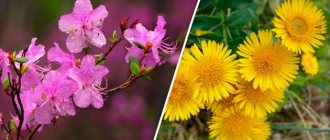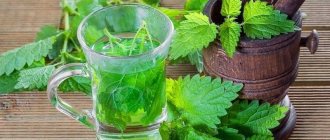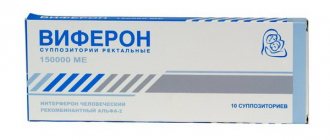Colds strike people during the cold season. A lack of vitamins weakens the immune system, which ceases to fully protect the body. Although a cold may seem like something minor that will go away on its own, it can cause serious complications. People understood this a long time ago, so they were looking for ways to increase immunity so that the disease would not develop into something more severe and dangerous.
In ancient times there were no synthetic medicines; they did not know how to produce them, so they used what is now called alternative medicine. People of that time painstakingly studied plant organisms and observed their effect on humans. They managed to discover and study medicinal herbs for colds.
Differences between a cold and the flu
A cold is a common name for diseases such as acute respiratory viral infections, acute respiratory infections and even influenza. Such a medical term does not officially exist, it is a popular name. But it is generally accepted that acute respiratory disease (acute respiratory disease) combines ARVI, nasopharyngeal infections and complications due to bacterial infection.
Despite belonging to one large group under the unofficial name “cold”, the difference between acute respiratory viral infections and acute respiratory infections from influenza is undoubtedly.
Cold symptoms
The symptoms of flu and colds are different from each other, and this fact affects the choice of medicinal plants. A cold is more easily tolerated, so although a person feels depressed and tired, this will manifest itself to a lesser extent than with the flu. Depending on the nature of the symptoms, you can determine which herbs should be used in treatment.
The state of a cold looks like this:
- smooth development of infection;
- the condition worsens slightly on the 2-3rd day;
- temperature from 37 to 38 degrees;
- manifestation of exogenous intoxication in the form of weakness and drowsiness;
- swelling of the nose and severe runny nose, clogging the airways;
- slight headache when complicated by sinusitis and other infections;
- insomnia is either absent or appears at high temperatures;
- runny nose, runny nose;
- sneezing as a result of sinus congestion;
- dry or wet cough;
- redness of the eyes in case of bacterial infection;
- soreness and slight pain in the throat and chest.
Intoxication in this case does not play a big role and is almost invisible. The patient’s state of health remains more or less normal without any serious changes.
Flu symptoms
A cold is much milder, unlike the flu. Influenza is a disease caused by ribonucleic acid (RNA) viruses. By the appearance of a person you can immediately guess that he is sick. The flu makes the face puffy and the eyes red.
General symptoms include:
- a sharp deterioration in health;
- increased fatigue;
- extremely high temperature, reaching 40 degrees and difficult to reduce;
- pronounced intoxication in the form of fever and joint pain;
- severe headache, aggravated in the temporal lobe;
- rapid weight loss;
- nasal congestion as a reflection of a complication of an existing disease;
- mild runny nose that lasts no more than three days;
- swelling and redness of the throat;
- chest pain;
- insomnia;
- severe dry cough, which turns into a wet cough after a few days;
- nausea, stomach upset (diarrhea).
Sometimes the flu begins so abruptly that a person can even tell the exact time when he felt some kind of discomfort and malaise.
The flu is longer than the common cold. On average, it lasts from 7 to 10 days, but even after recovery, the patient will experience weakness and headache for about two more weeks.
Contraindications for use
But, with all these advantages, it should be remembered that any medicinal plants have a number of contraindications and their uncontrolled use can be dangerous and lead to negative consequences. This is especially true for children.
Therefore, do not forget, before use, always look at the possible side effects of medicinal plants, dosages, and even better, consult a specialist.
Read more about herbal treatment in this post.
Over the summer, I prepare a lot of medicinal plants, which we grow at our dacha. That's why I always have my own ready-made medicinal herbal teas.
Well, if you don’t have the time or opportunity to prepare medicinal raw materials, you can always buy ready-made herbs or tea mixtures.
The main thing is that they are made from high-quality organic raw materials.
Use herbs for colds correctly and always be healthy.
Alena Yasneva was with you, see you again!
Cover photo of @ChamilleWhite post
JOIN MY GROUPS ON SOCIAL NETWORKS
Cold and flu prevention is a huge market. And it doesn’t matter at all what part of the world you live in. Anyone can get sick! After all, sometimes the cold is not the most important enemy. Many vitamins and nutritional supplements that prevent and treat infections can be easily found in pharmacies. But the safest and most common are herbs for colds.
There are a huge number of them. We may not even list all of them. But, be that as it may, all medicinal plants of this kind help perfectly. Moreover, they will be very effective not only for the prevention of colds, but also at the first signs of an onset of illness. But what can we say, if in complex treatment they can even correct a neglected condition.
Of course, we will not promise lightning-fast results. But just think about it: before there were simply no drugs with chemicals. And all our ancestors were treated only with herbs.
When used correctly, herbal remedies can strengthen the immune system. Your body will cope with germs and viruses faster. And you, accordingly, will recover easier.
How to use them correctly? Herbs for colds are generally only brewed into tea. The most famous of them are chamomile, thyme, sage, linden, mint and oregano. But sometimes, to prevent flu and colds, they drink nutritional supplements based on medicinal herbs. Probably not everyone knows about this method.
But we will try to tell not only about the most famous pharmaceutical plants. Let's include others with historically proven potency against flu and colds on this list. They will not only help you cope with the main symptoms of the disease, but will also improve your well-being.
From this article you will learn:
Herbs for colds
The rule learned long ago to drink more fluids when you are sick is indeed important and has confirmation of this. This is due to the fact that sweating increases during illness, and as a result, the body may experience dehydration. However, this is far from the main reason for saturating with fluids and consuming grass for a cold.
Tea with healing properties
Having more water in the blood speeds up the movement of particles in the blood, which means the kidneys are more active in filtering fluids and removing toxins. The simplest and most popular way to replenish fluids and improve health is herbal tea.
| Name | Description |
| "Timalin" | Used for pathologies of soft tissues and the musculoskeletal system. It is also used for hematopoietic disorders due to oncological processes, radiation therapy or chemotherapy. Strengthens the immune system. It is administered intramuscularly. The course of treatment is 10 days. Facilitates the condition of patients with bronchitis |
| "Timogen" | It is used to inhibit infectious processes that are characterized by inhibition of cellular immunity. The drug is available for patients of any age. Course of treatment 7–10 days |
| "Cycloferon" | Antiviral immunomodulatory drug. Prescribed for complex therapy of infectious diseases, including the treatment of intestinal infections and HIV. Indicated for use by patients of all age categories. Prevents the development of bronchitis. Administered intramuscularly or intravenously |
| "Erbisol" | Intended for the treatment of pathologies of the digestive system. Allowed for bronchitis and other purulent processes of lung tissue. Children are not allowed to enter |
Of course, recipes are not limited to these herbs. Black currant leaves, twigs, raspberry leaves and berries, and even dill seeds are suitable for adding to tea. Probably, listing which herbs should be used for colds and flu will be a long process that has no framework.
It may seem unusual, but it is permissible to add spices to tea. Ginger perfectly fights inflammation, cloves thin out mucus, and cinnamon will not only warm you up, but also cope with severe pain in the joints.
How to brew tea
To treat a cold, the easiest way is to pour boiling water over a collection of herbs and let it brew for a quarter of an hour. As an additive, you can add lemon or honey to your tea (this will be even healthier). The proportions must be observed in such a way that there is half a liter of water per tablespoon of the mixture. This is an acceptable concentration, but if the saturation seems insufficient, you should add two more tablespoons.
Method of application
Medicinal herbs for colds and runny nose are used in different forms. Taking into account the complexity of the disease and accompanying symptoms, the following drugs are prepared:
- herbal tincture for colds,
- herbal tea for colds,
- herbal infusion for colds,
- decoction of medicinal plants.
It is very easy to prepare the tincture. To do this, you will need alcohol and the herb from which you want to make a tincture. Place the grass in a gauze cloth and tie tightly. Place gauze with grass in a glass container, or a jar. Pour in vodka or alcohol: the required strength is 40 - 70 degrees. Place the jar in a dark place and leave for two weeks. When the due date has passed, strain the tincture, pour into a dark container and store in the dark.
You can collect the herb for tincture and other medicine yourself, you can buy it at the market from grandmothers, or you can go to the pharmacy and buy it there. The main thing is to choose carefully. The herb must be fresh, so check expiration dates.
As for tea, there are no difficulties here either. We are used to making and drinking tea at home. You can buy tea for colds at the pharmacy. The procedure for making tea is the same as what you are used to. Doctors recommend buying cough tea at a pharmacy. This drug complements traditional medicines.
We'll talk about how to prepare an infusion or decoction a little later. It is only worth noting that the dosage of the drug must be clarified with the attending physician. To avoid conflicts between different medications, consult your doctor before starting treatment with folk remedies for the flu.
Inhalations for colds
The inhalation method is successfully used in folk medicine. Treatment of colds with folk remedies using inhalations is very popular because it does not require special skills, but has a positive effect on the condition of the body:
- grind the herb or herbs if it is a herbal remedy for colds,
- place the mixture in a saucepan,
- fill with hot water,
- Boil the plants for five minutes,
- remove the pan from the heat, place it on the floor,
- lean over the pan, covered with a towel or blanket,
- inhale the herbal vapor until the steam stops flowing.
Do not inhale if your body temperature is elevated. Wait until the temperature drops and only then carry out the procedure.
Herbs to restore internal strength
There are herbs that help restore strength during colds. You can simply pour 10 grams of willow tea with 0.4 liters of boiling water. Before drinking, the drink is kept for approximately 30 minutes. It is recommended to drink 5 sips of the product 20 minutes before meals. Frequency of application: four times a day.
There is another recipe:
- You need to take a little pre-dried fireweed, about 1.5 tablespoons.
- Plant materials must be dissolved in 0.25 liters of boiling water.
The product is taken throughout the day, in small sips. Frequency of application: three times a day. The product is taken before meals, approximately 30–50 minutes.
You can chop 3 garlic cloves. The resulting slurry is combined with butter, three drops of lemon juice are added. The resulting mass is mixed and spread on bread.
Plants with antipyretic effect for ARVI
If the temperature during ARVI does not exceed 38 degrees, it is not recommended to bring it down. You can fight high fever with the following folk remedies:
- 20 grams of dried linden flowers are placed in a convenient container. Pour 250 ml of hot water into the bowl. The mixture must be infused for 15 minutes. Take a full glass of the drink three times a day, warm.
- 20 grams of elderberry leaves or flowers should be steamed in 0.25 liters of boiling water. The product is drunk instead of ordinary tea three times a day.
- 2 full tablespoons of freshly picked or dried raspberries are dissolved in boiling water (250 ml). The resulting drink can be taken 3 glasses throughout the day. In addition, you need to drink 200 ml of the product shortly before bed.
Plantain for cough recipe
Plantain for cough
Another effective herbal cough remedy that can be used by everyone, regardless of age, is plantain decoction. By causing liquefaction of viscous sputum, as well as relieving irritation, it makes you feel better and eliminates the symptoms of ARVI. Its effectiveness and safety make it possible to include it in pharmaceutical antitussives for children.
To make a decoction of plantain for a cough, you need to infuse dried plantain (1 tbsp) steamed with a glass of boiling water. Take throughout the day, divided into 3 doses.
Herbs for pain
In order to eliminate the feeling of aching joints and headaches, you should use the following recipes:
- 20 grams of peppermint (dried or fresh) need to be dissolved in 0.3 liters of hot water. The product is taken 0.1 liter twice a day;
- 2 large spoons of catkins and birch buds are brewed with 350 ml of boiling water. Take 120 ml three times a day;
- 10 grams of dried hawthorn, peony and motherwort fruits are poured into a liter of boiling water. The product has calming and analgesic properties. Take 50 ml of the product shortly before bedtime.
Medicinal plants for nasal congestion
There are a lot of plants that have antispasmodic and bronchodilator effects. St. John's wort helps relieve nasal congestion and eases the well-being of patients suffering from a painful cough.
To prepare the collection, the following plants are needed:
- one part valerian;
- three parts each of St. John's wort and oregano;
- two parts each of dill, yarrow, flax seeds, birch buds and viburnum leaves.
All ingredients are carefully mixed. 1 tablespoon of the medicinal mixture is poured into 0.2 liters of boiling water. Take small sips three times a day.
Herbs for treating flu
The herb for the flu is drunk when symptoms have already appeared. This allows you to influence each of the signs of the disease in its own way. Linden, elderberry and raspberry have an antipyretic effect. Fireweed will boost the immune system. And birch (twigs, earrings, leaves, buds), mint, valerian, hawthorn, peony and fragrant rue will help eliminate headaches.
A collection consisting of plantain, linden, chamomile and coltsfoot quickly brings down the temperature. 4 tablespoons of the herb are poured with boiling water and left for 10 minutes. After this, the prepared mixture can be drunk every time after a meal.
Herbal infusions
A variety of influenza decoctions are simple and effective. Decoctions of elecampane (add a little), chamomile, tripartite, anise, fennel, nettle, linden, coltsfoot and St. John's wort have antibacterial properties. It is better to use the last few components in larger quantities than the rest.
There is another effective decoction. Pour a teaspoon of cinnamon into a liter of fresh beer, add a few clove buds and some lemon peels. Then grind three yolks with a few tablespoons of sugar and beat until foam forms. The beer needs to be heated and mixed with the previously obtained mixture, after which everything must be boiled until it thickens. Be sure to stir the broth and not allow it to boil. You can drink 1-1.5 glasses of this remedy, and the flu will begin to recede the very next day.
Herbal tinctures
The good thing about the tincture is that it retains almost all the properties of the herbs. Making it at home is much easier than it might seem. And storing the tincture is not problematic.
Easy to prepare raspberry tincture. It is necessary to cover half a kilogram of berries with sugar in the same volume. Next, pour in about 700 ml of vodka and leave to steep for a month.
Popular recipes for colds and flu
There are many ways to prepare and use herbal remedies to treat colds and flu.
Many of them have common basic components with acceptable variations in terms of dosage.
Therefore, the recipes listed below can be used both as given and as a basis .
But the number of components used can only be reduced, while maintaining the general proportions, if there are several herbs in the product:
- A teaspoon of chamomile is poured into a glass of boiling water . After cooling, the product should be divided into three equal parts and drunk one at a time throughout the day, waiting a few minutes after eating. As an option, you can add a third of a teaspoon of soda to a glass and gargle with the mixture four times a day (for each gargle you need to prepare a glass of the product).
- A mixture of dried herbs thyme, mint, rose hips, linden leaves and St. John's wort is poured into half a liter of boiling water . These components are mixed in equal proportions to obtain a tablespoon of this herbal base. The composition is infused until it cools completely and is drunk in the morning and evening, one glass at a time. For taste and greater effect, you can add a teaspoon of honey to the product.
- A mixture of sage, chamomile, calendula, string and eucalyptus . Take one teaspoon of each type of herb and pour in 500 grams of boiling water , infuse until it becomes warm, but does not cool completely. The infusion is used three times a day at approximately equal intervals to rinse the nose with a severe runny nose or nasal congestion.
- One teaspoon of wild rosemary and nettle leaves is poured into a liter of boiling water overnight . The next day, the drug can be taken one glass four times a day in equal portions, regardless of meals.
- For the prevention and treatment of viral colds, the following herbal mixture is used: 5 grams of lavender flowers, 15 grams of chamomile and 20 grams of eucalyptus leaves and echinacea . The mixture is poured with a glass of boiling water for 15 minutes, then filtered through cheesecloth. The composition is drunk before meals, preparing a new portion each time.
- A composition that includes 10 grams of coltsfoot and chamomile and 20 grams of linden flowers and plantain . The mixture is poured into a glass of boiling water and consumed cooled immediately after meals 3 times a day.
- A teaspoon of dried licorice root is crushed using a blender or ground into powder by hand and poured with a glass of boiling water . After this, keep in a water bath for another quarter of an hour. The composition is taken in the morning, at lunch and in the evening, half a tablespoon.
- A tablespoon of thyme is infused in half a liter of boiling water for two hours. The finished medicine should be drunk during the day in two doses. This recipe has an antimicrobial effect.
- Pour a tablespoon of dried plantain leaf into a glass of boiling water for 10 minutes. The infusion is drunk twice a day as tea.
The use of herbs in the treatment of children
To cope with a child’s cough, you can take one spoon each of pre-dried sage, chamomile, raspberry, oregano, coltsfoot. Plant raw materials are poured with 350 ml of hot water. It is recommended to take 3 sips of the product three times a day.
Medicinal plants for colds are used with caution. They may cause unwanted side effects. If a child has a pronounced tendency to allergies, it is recommended to abandon this method of treating and preventing colds.
If you have hoarseness and pain in the throat, you can add honey (5 grams) and 10 grams of cocoa butter to 0.2 liters of milk. It should be warm, not scalding. You should take 0.1 liter of the product several times a day.
To alleviate a child’s condition during a cold, products made from diaphoretic and antipyretic herbs are also used:
- nettle;
- lemon balm;
- dandelion officinalis;
- peppermint.
Dandelion officinalis is endowed with anti-inflammatory properties. One spoon of herb is infused for 30 minutes using a water bath. After this, the product is filtered. The child is given 5 ml of the drink after meals. Frequency of use: three times a day.
How does a cold manifest?
When we talk about a cold, we mean a respiratory disease caused by infection with pathogenic bacteria or viruses, and occurring in a rather acute form. Characteristic signs of acute respiratory infections:
- fever;
- chills or fever;
- headache;
- muscle aches;
- runny or stuffy nose;
- frequent sneezing;
- pain and sore throat;
- cough and chest pain.
The severity of symptoms depends on the strength of the immune system and its ability to resist pathogens. To prevent complications, when the first symptoms appear, you should immediately begin to treat them and herbs for colds will become a faithful assistant.
Colds, acute respiratory viral infections or flu belong to a class of respiratory diseases with common symptoms.
The first signs of the disease include general malaise, weakness, muscle aches and pain, headache, and rarely dizziness, nausea or loss of appetite. Standard symptoms appear in the first week after infection.
The duration of the disease depends on the resistance of the body's immune system and its ability to resist a specific type of pathogen.
Main symptoms of a cold:
- increased body temperature, fever, severe chills;
- body aches, frequent muscle pain and cramps;
- nasal congestion, rhinitis, lacrimation;
- cough and sore throat;
- sneezing, chest pain.
Practice shows that herbal medicine at home is most effective at the initial stage of the onset of a cold.
In the acute period of the disease, it is rational to use combination treatment - taking herbal decoctions in parallel with medical prescriptions.











